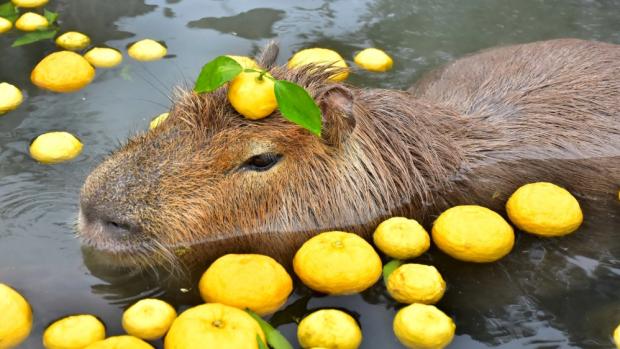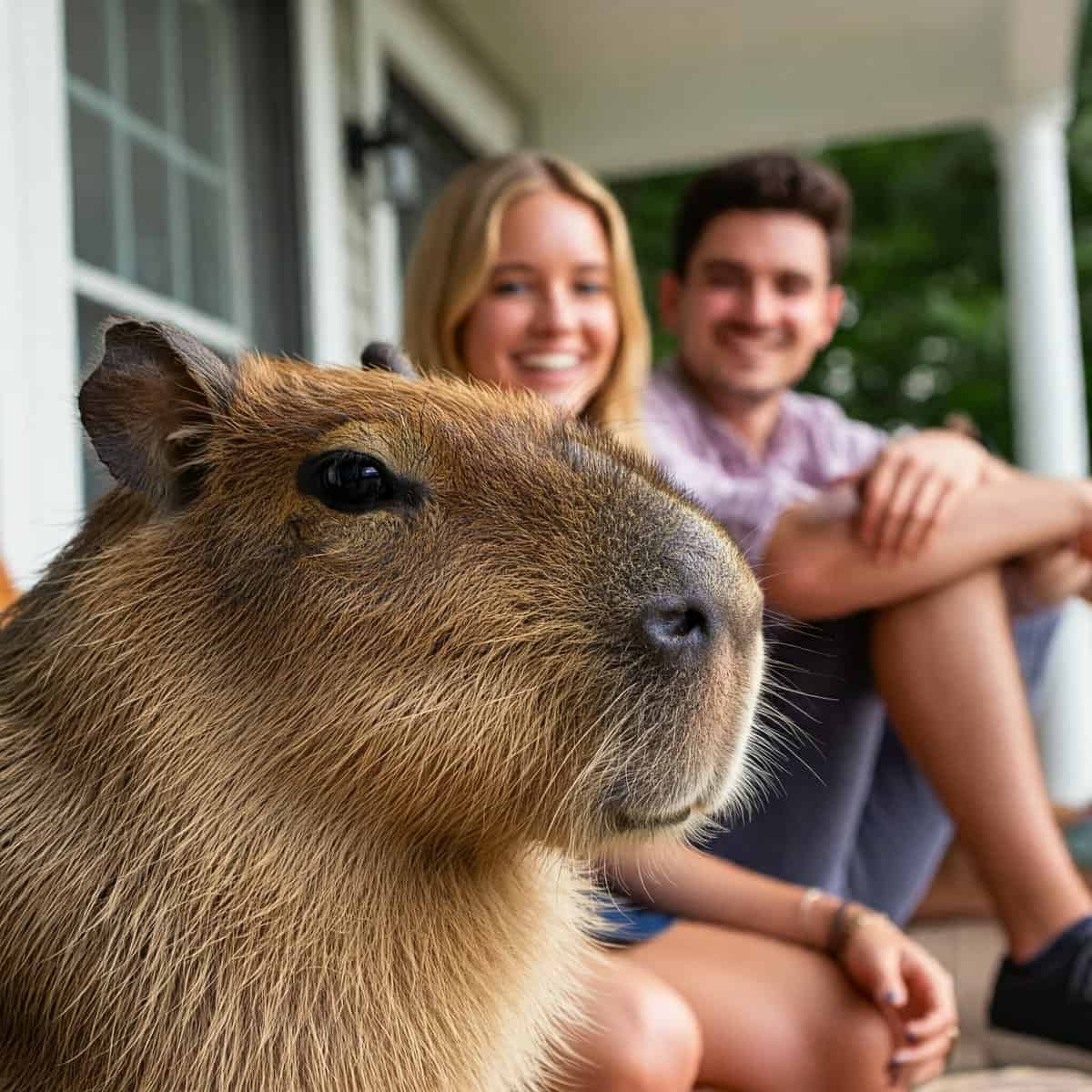The Joys and Challenges
Capybaras are the largest rodents in the world, native to South America. They are known for their friendly and social nature, making them popular exotic pets. However, before getting a capybara, it’s important to understand their unique needs and behaviors. Capybaras are semi-aquatic animals, which means they require access to water for swimming and cooling off.
They also need a large outdoor space to roam and graze, as they are herbivores and primarily eat grasses and aquatic plants. Additionally, capybaras are highly social animals and thrive in the company of other capybaras or even other species. It’s important to consider the social needs of capybaras before bringing one into your home.
Capybaras also have specific housing requirements, as they need a secure enclosure with access to water, shade, and shelter. Their enclosure should be spacious enough to allow for natural behaviors such as swimming, grazing, and socializing. It’s also important to provide enrichment activities to keep capybaras mentally stimulated and prevent boredom.
Before getting a capybara, it’s crucial to research local laws and regulations regarding exotic pet ownership, as capybaras may be subject to specific permits or restrictions in some areas. Overall, understanding the unique needs and behaviors of capybaras is essential before deciding to bring one into your home.
Creating the Perfect Environment for Your Capybara
Creating the perfect environment for a capybara requires careful consideration of their natural habitat and behaviors. As semi-aquatic animals, capybaras need access to water for swimming and cooling off. A large pond or pool is ideal for providing this essential element of their environment.
Additionally, capybaras need a spacious outdoor enclosure with plenty of grass and vegetation for grazing. Their enclosure should also include shaded areas and shelters to protect them from the sun and inclement weather. It’s important to provide a secure perimeter to prevent escape and protect them from potential predators.
In addition to the physical environment, it’s important to consider the social needs of capybaras. They are highly social animals and thrive in the company of other capybaras or even other species. Providing companionship for your capybara is essential for their mental and emotional well-being.
If you are unable to provide a companion for your capybara, it’s important to spend plenty of time interacting with them and providing enrichment activities to prevent loneliness and boredom. Overall, creating the perfect environment for a capybara requires careful consideration of their natural habitat, social needs, and physical requirements.
Feeding and Nutrition: A Guide to Capybara Diet
Feeding and nutrition are crucial aspects of caring for a capybara. As herbivores, capybaras primarily eat grasses and aquatic plants. Their diet should consist of high-quality hay, grass, and fresh vegetables such as lettuce, carrots, and sweet potatoes. It’s important to provide a varied diet to ensure they receive all the essential nutrients they need to thrive. Additionally, capybaras require access to fresh water for drinking and swimming, as they are semi-aquatic animals.
In addition to their primary diet of grasses and vegetables, capybaras may benefit from supplemental foods such as commercial rodent pellets or vitamin supplements. It’s important to consult with a veterinarian or exotic animal nutritionist to ensure your capybara’s diet is balanced and meets their specific nutritional needs. Overfeeding can lead to obesity and health problems, so it’s important to monitor their food intake and provide appropriate portion sizes. Overall, feeding and nutrition are essential aspects of caring for a capybara and require careful consideration of their dietary needs.
Socializing and Bonding with Your Capybara
Socializing and bonding with a capybara is an important aspect of their care, as they are highly social animals that thrive on companionship and interaction. If possible, providing a companion for your capybara is ideal for meeting their social needs. However, if a companion is not available, it’s important to spend plenty of time interacting with your capybara to prevent loneliness and boredom. Capybaras enjoy being petted and groomed, so spending time bonding with them through physical contact can help strengthen your relationship.
In addition to physical interaction, providing mental stimulation through enrichment activities is important for keeping your capybara engaged and happy. This can include providing toys, puzzles, or opportunities for exploration in their environment. It’s also important to provide opportunities for exercise and play to keep your capybara physically active and mentally stimulated. Overall, socializing and bonding with your capybara is essential for their mental and emotional well-being.
Health and Wellness: Caring for Your Capybara’s Physical and Mental Well-being
Caring for the health and wellness of a capybara requires regular veterinary care, proper nutrition, and attention to their mental well-being. Regular veterinary check-ups are essential for monitoring their overall health and addressing any potential health issues. It’s important to find a veterinarian with experience in exotic animal care, as capybaras have specific health needs that may differ from more common pets.

In addition to veterinary care, providing a balanced diet and regular exercise is important for maintaining your capybara’s physical health. Monitoring their weight and body condition is essential for preventing obesity and related health problems. Mental wellness is also an important aspect of caring for a capybara, as they require social interaction, mental stimulation, and opportunities for play and exploration. Providing a stimulating environment with plenty of opportunities for socialization and enrichment activities is essential for keeping your capybara mentally healthy and happy.
Training and Enrichment Activities for Your Capybara
Training and enrichment activities are important aspects of caring for a capybara, as they require mental stimulation and opportunities for play and exploration. Capybaras are intelligent animals that can be trained using positive reinforcement techniques such as treats or praise. Training can help teach them basic commands, improve their behavior, and strengthen the bond between you and your capybara.
In addition to training, providing enrichment activities such as toys, puzzles, or opportunities for exploration in their environment can help keep your capybara mentally stimulated and prevent boredom. Providing opportunities for exercise and play is also important for keeping your capybara physically active and mentally engaged. Overall, training and enrichment activities are essential for keeping your capybara mentally stimulated and happy.
Common Challenges and Solutions for Capybara Ownership
Owning a capybara comes with its own set of challenges, but with proper care and attention, these challenges can be overcome. One common challenge is providing a suitable environment for a capybara, as they require access to water for swimming, grazing space, shade, shelter, and opportunities for socialization. Ensuring their enclosure meets these requirements is essential for their well-being.
Another challenge is finding appropriate veterinary care for a capybara, as not all veterinarians have experience in exotic animal care. It’s important to find a veterinarian with experience in treating capybaras to ensure they receive proper medical care when needed. Additionally, providing mental stimulation through enrichment activities can be challenging but is essential for keeping your capybara happy and healthy.
Overall, owning a capybara requires careful consideration of their unique needs and behaviors but can be a rewarding experience with proper care and attention.




